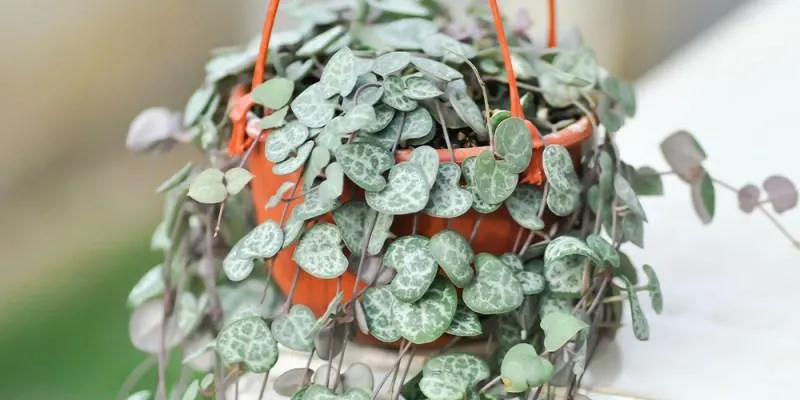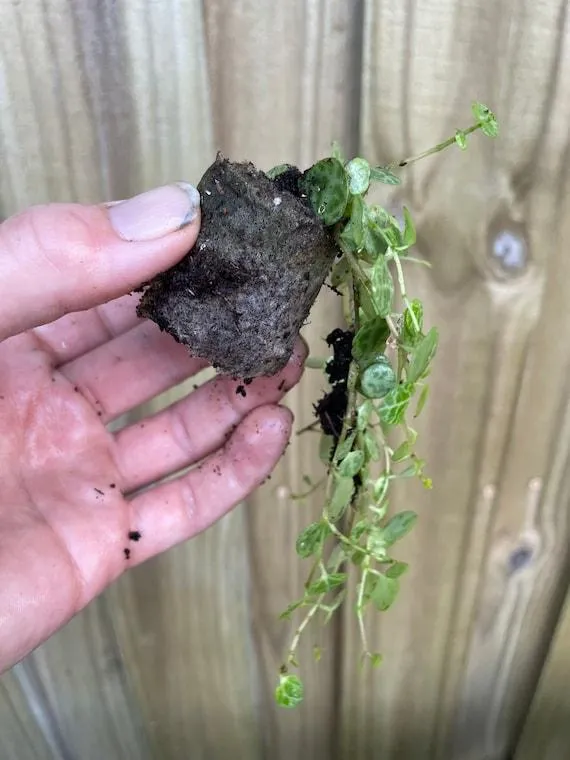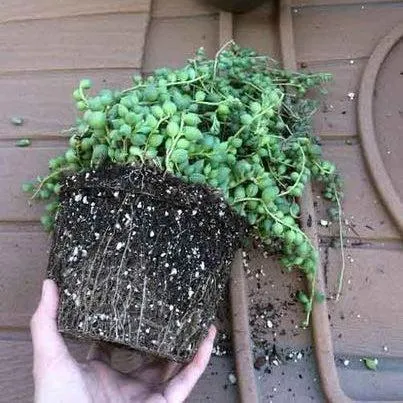Do String of Hearts Plants Like Being Root Bound?
One of the most common questions plant parents have about string of hearts (Ceropegia woodii) is whether these trailing indoor vines prefer their roots to be confined or allowed to spread out freely. As the name suggests, string of hearts is well-known for its long strands resembling a string of heart-shaped leaves. But what about its root preferences?
Understanding Root Bound Conditions
Before diving into string of hearts’ root tendencies, let’s clarify what it means for a plant to be “root bound.” When a plant has been growing in a container for an extended period of time, its root system will eventually fill the entire pot. With no room to grow outward, the compacted roots circles and twist around each other tightly Inside. This is considered a root bound state.
For some plants, being pot-bound causes issues like stunted growth or even death. However, many others cope just fine or even prefer denser root systems. So does string of hearts fall into the root bound tolerant category?
String of Hearts Can Tolerate Root Bound Conditions
From my own experience of growing string of hearts indoors for years, I’ve found these vines to be remarkably adaptable when it comes to their root environments. Even in small 4-inch pots with little soil, they’ll still thrive and produce new stems prolifically. The roots may fill the container completely, but the plant shows no signs of suffering.

Horticulturists and other plant experts also generally agree that string of hearts are amenable to being root bound. As a trailing vine, its growth habit is perfectly suited to having compacted roots. New stems and leaves will just cascade over the edges of the pot endlessly.
Benefits of Allowing Root Bound Conditions
There are actually some potential benefits to allowing string of hearts plants to become root bound periodically:
- It encourages more stems to form. crowded roots signal the plant to devote energy to aerial growth instead.
- Root bound string of hearts stay nicely contained and don’t spill over unintentionally. This makes them ideal for hanging baskets or shelves.
- Re-potting is needed less frequently, saving time and resources. The dense roots act as their own soil.
So in summary – while providing adequate pot space won’t necessarily harm string of hearts, confining their roots somewhat frankly seems to suit them better!
What About Repotting Root Bound Plants?
Nonetheless, most experts recommend checking root bound string of hearts periodically and re-potting them into a slightly larger container as needed. But here are a few tips when it’s time:

- Gently massage the root ball to loosen it before placing in a fresh potting mix.
- Go up just one pot size, like from a 4-inch to a 6-inch pot. Avoid shocking the roots with too much new space.
- Water thoroughly after re-potting to settle the soil around the roots.
- Trim off any dead or damaged roots to promote new growth.
Basically, re-pot only when roots are visibly congested but not painfully so. With its forgiving nature, string of hearts tends to take re-potting in stride.
Bottom Line – String of Hearts Thrives With Confined Roots
In summary, allowing string of hearts to become moderately root bound is not only acceptable, but may in fact be preferable from the plant’s perspective. Its branching growing habit lends itself well to denser root systems. There’s no need to fret about overcrowded roots initially stunting growth.
As long as the soil drains adequately and you fertilize during the active growing season, string of hearts will rewards you with an abundance of dangling green strands regardless of its root conditions. So pot these vines snugly and just let their trailing form follow naturally – without stressing over giving tons of root space!
I hope this helps answer the question of whether string of hearts likes being root bound or not. Feel free to contact me if you have any other plant care questions. Happy growing!

Whether String of Hearts Like to be Root Bound
| Plant | Root Bound Tolerance | Recommended Pot Size |
|---|---|---|
| Spider Plant | Tolerant | 6 inches or larger |
| Pothos | Tolerant | 6 inches or larger |
| Philodendron | Tolerant | 8 inches or larger |
| Peperomia | Tolerant | 4 inches or larger |
| String of Hearts | Not Tolerant | 10 inches or larger |
FAQ
-
Do string of hearts like to be root bound?
Basically, string of hearts don’t exactly enjoy being root bound. Their roots tend to get cramped in a small pot over time and can’t spread out properly. This makes it tough for the plant to take up enough water and nutrients.
-
What signs show if a string of hearts is root bound?
Sometimes if a string of heart’s roots have gotten too packed in the container, the plant may show certain signs. The leaves could get a little droopy or yellow if the roots can’t get enough water. The growth might also slow down or stop since the roots have no space left to stretch out anymore. On the other hand, a crowded root ball won’t necessarily harm a thriving plant.
-
How often should you repot a string of hearts?
Most gardeners recommend repotting a string of hearts every 1-2 years or whenever its roots have clearly filled the pot. The ideal time is reported to be in early spring or summer when the plant is actively growing. Kind of like getting a size up in shoes, the roots appreciate a little more elbow room to expand into. Nevertheless, there’s no need to fix what isn’t broken, so a heavily root bound plant showing no issues may not need repotting just yet.
-
What size pot is best for string of hearts?
Experts suggest starting string of hearts off in a 4-6 inch diameter container. A pot around 6 inches wide allows decent space for a plant to develop a root system before needing to up-size. On the other hand, too much room means the soil stays wetter for longer, which string of hearts doesn’t basically like. Some gardeners have found good results using narrow but deep terracotta or plastic pots around 8 inches tall.

-
How do you repot a string of hearts?
To repot, carefully remove the plant from its current pot. Try not to break up the soil clump too much so as not to harm the roots. Fill the new container with a loose potting mix and make a hole slightly deeper than the original root ball. Set the root ball in and add extra soil to secure it. Tamp the soil gently. Be sure not to bury the bottom leaves and stems when placing the plant. Water thoroughly and place in a spot with indirect sunlight. The plant should set in to its new pot within a couple weeks.
-
What kind of soil do string of hearts like?
Most sources agree that string of hearts thrive in well-draining potting mixes. Perhaps its roots just can’t deal with soggy soil for long, as its natural habitat of rocks and sandy soil in Madagascar is remarkably dry. A potting mix containing lots of components like perlite, vermiculite, and bark avoids unnecessary moisture retention. You can’t go wrong using a quality, soil-less blend. On the other hand, regular potting soil amended with extra perlite or sand works fine too if drainage is maintained.
-
Do you have to prune string of hearts?
Generally there’s no need to prune string of hearts unless trying to shape or control the plant’s growth. The trailing vines will wrap around whatever they encounter naturally. Maybe an occasional light trimming evens things out, like when stems get leggy in low-light spots. But on the whole, give your string of hearts the freedom to just be itself without butchering your pal’s lush locks! Let me know if you have any other plant propagating questions.
